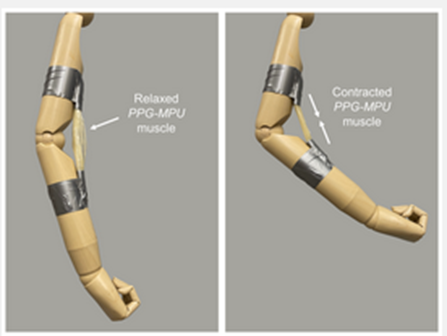Shape memory polymers that return to their original shapes after applying heat or light are thought to be a natural for soft robotics. However, they lack the ability to store sufficient energy. Published in ACS Central Science, is a research report that shows the development of a shape memory polymer that stores nearly 6x more energy than previous attempts.
Zhenan Bao and colleagues set out to develop a new type of shape memory polymer that stretches into a stable, highly elongated state, allowing it to release large amounts of energy when returning to its original state.
When incorporating 4-,4’-methylene bisphenylurea units into a propylene glycol polymer backbone, in the original state, polymer chains were tangled and disordered. Stretching caused the chains to align and form hydrogen bonds between urea groups, creating supermolecular structures that stabilized the highly elongated state. Heating caused the bonds to break and the polymer to contract to its initial, disordered state.
When tested, the polymer stretched up to f5x its original length and stored up to 17.9 J/g energy. The team demonstrated that the stretched material could use this energy to lift objects 5,000 times its own weight upon heating. An artificial muscle was created and when heated, the material contracted, causing the mannequin to bend its arm at the elbow. In addition to its record-high energy density, the shape memory polymer is also inexpensive at approximately $11 per lb and easy to use.
Original Release: Eureka Alert

